AiPrise
10 min read
September 30, 2025
Understanding Deepfake Legal Implications and Actions
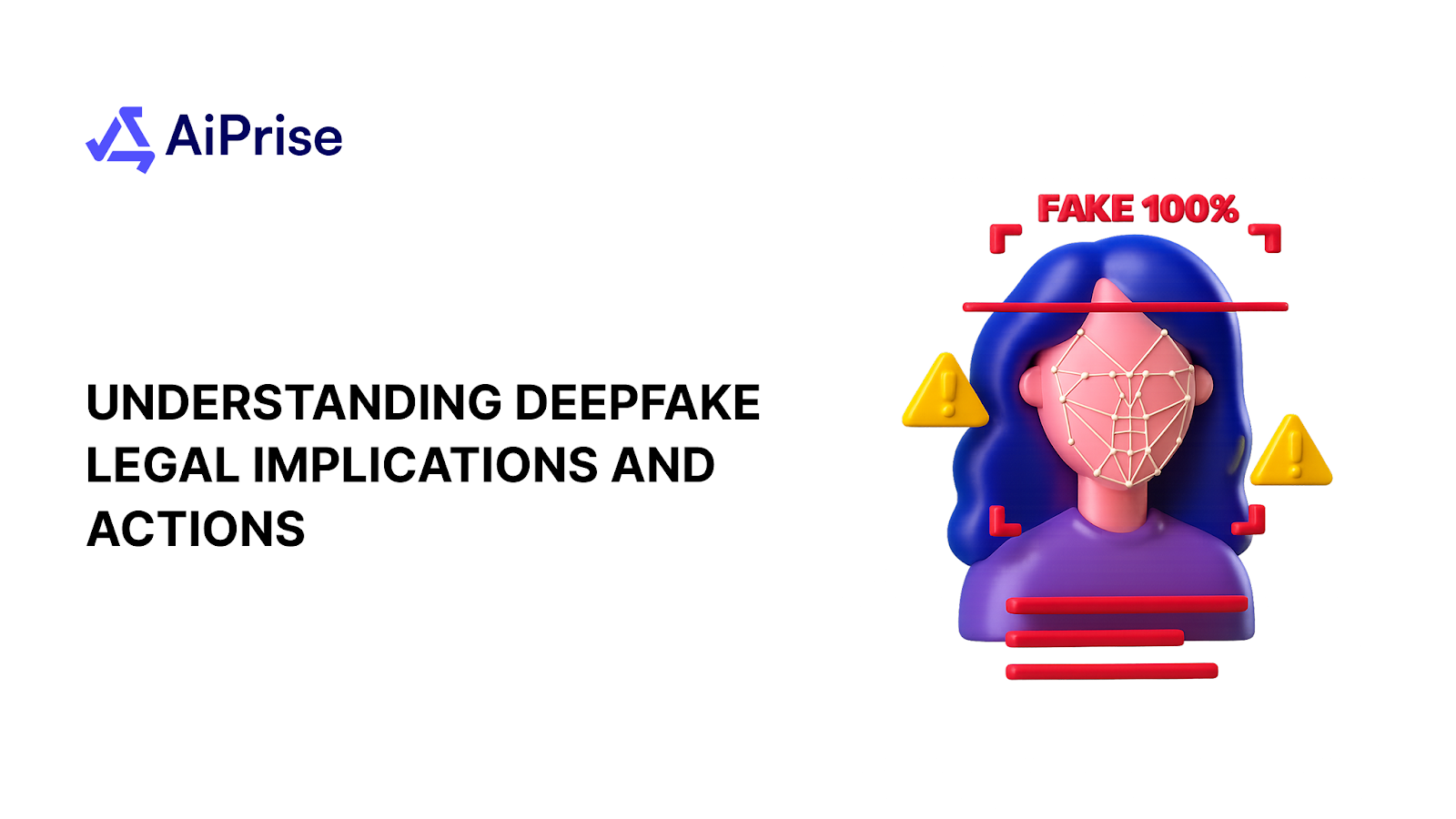
Key Takeaways










You might not realize it, but by 2025, an estimated 8 million deepfake videos will be circulating online, a staggering jump from just 500,000 in 2023. This alarming surge brings serious legal challenges.
As a business, understanding the deepfake legal implications is more critical than ever, as these synthetic media can cause irreparable reputational damage, financial loss, and legal liabilities.
This blog will walk you through the most important legal risks, including new U.S. federal laws like the "TAKE IT DOWN Act," and actionable steps to protect your brand and stay compliant.
Knowing how to respond effectively can help keep your business secure in a rapidly changing digital world. Keep reading to learn what you absolutely must know now.
Key Takeaways
- Deepfake technology has rapidly evolved into a pervasive legal and financial threat, with fraud losses projected to reach billions globally.
- Existing laws are fragmented, and enforcement is hindered by anonymity, cross-border issues, and evolving tech outpacing regulation.
- Businesses face complex risks: identity theft, defamation, IP violations, privacy breaches, and escalating regulatory compliance demands.
- Proactive strategies combining AI-powered detection, biometric verification, employee training, and legal readiness are critical for risk mitigation.
What Exactly Are Deepfakes?
Deepfakes are synthetic media, videos, images, or audio that use advanced artificial intelligence (AI) and machine learning to create hyper-realistic but fabricated content that appears genuine. Unlike simple editing, deepfakes convincingly manipulate faces, voices, and behaviors.
Even experts can struggle to detect deepfakes due to:
- Near-perfect facial and voice replication using a large and diverse training dataset
- Subtle visual cues, such as irregular blinking or lighting inconsistencies, require advanced forensic analysis to identify.
- Continuous improvements in GAN technology have reduced previous artifacts and flaws.
Here’s a quick overview of key technologies in deepfake creation:
To see how these technologies come together in practice, let’s explore the main types of deepfakes frequently encountered in both digital media and legal discussions.
Types of Deepfakes
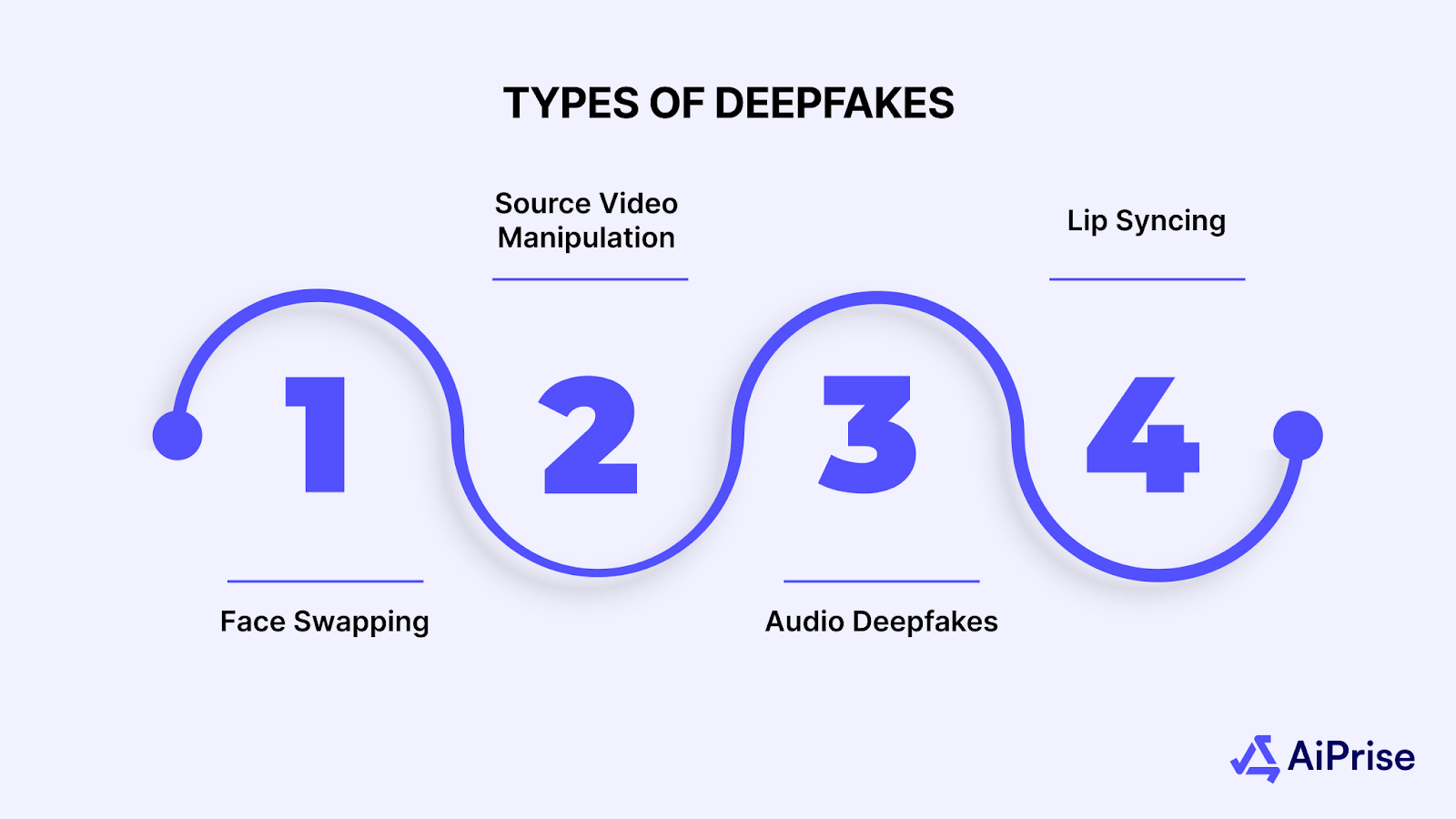
To truly grasp the threat of deepfakes, let’s understand the specific AI-driven methods used to create these highly convincing fake videos and audios.
- Face Swapping: Seamlessly replaces one person’s face with another’s in video footage, preserving natural movements and expressions.
- Source Video Manipulation: Alters existing videos to make individuals appear to say or do things they never actually did.
- Audio Deepfakes: Uses AI to clone voices by replicating speech patterns, creating authentic-sounding synthetic speech.
- Lip Syncing: Matches synthetic or real voice recordings with video footage, often combined with facial changes to enhance realism.
Also Read: Common Types of Business and Financial Fraud
Now that you understand how deepfakes are created, it’s essential to recognize their real-world impact, especially the serious legal and financial risks businesses face.
How Deepfake Legal Risks Impact Your Business Bottom Line
Deepfake technology is no longer a futuristic threat; it is actively causing significant financial, operational, and reputational harm to businesses across industries.
The scale and sophistication of these attacks have escalated dramatically:
- Rapid Growth in Deepfake Incidents: Global detection of deepfake-related fraud will grow from $5.5 billion in 2023 to $15.7 billion in 2026.
- Costly Financial Losses: In 2024, the average business lost nearly $500,000 per deepfake incident, with some large enterprises reporting losses exceeding $680,000. Projections estimate that deepfake-related fraud losses in the U.S. could reach $40 billion by 2027.
- Erosion of Brand Trust: Approximately 80% of consumers say trust is a prerequisite for purchases, and deepfake scandals, such as manipulated videos of executives, can rapidly undermine confidence and damage valuable brand equity.
- Operational Disruption: Deepfakes can circumvent verification systems, trick employee workflows, and disrupt communication channels, leading to costly data breaches and business interruptions.
- Legal and Regulatory Exposure: Businesses face growing liabilities under emerging laws such as the EU AI Act, U.S. TAKE IT DOWN Act, and UK Online Safety Act, which impose strict regulations and fast takedown requirements on harmful deepfake content.
With the real risks to your bottom line clear, it’s vital to explore the complex legal challenges businesses must overcome to protect themselves in the deepfake era.
Legal Challenges Every Business Faces With Deepfakes
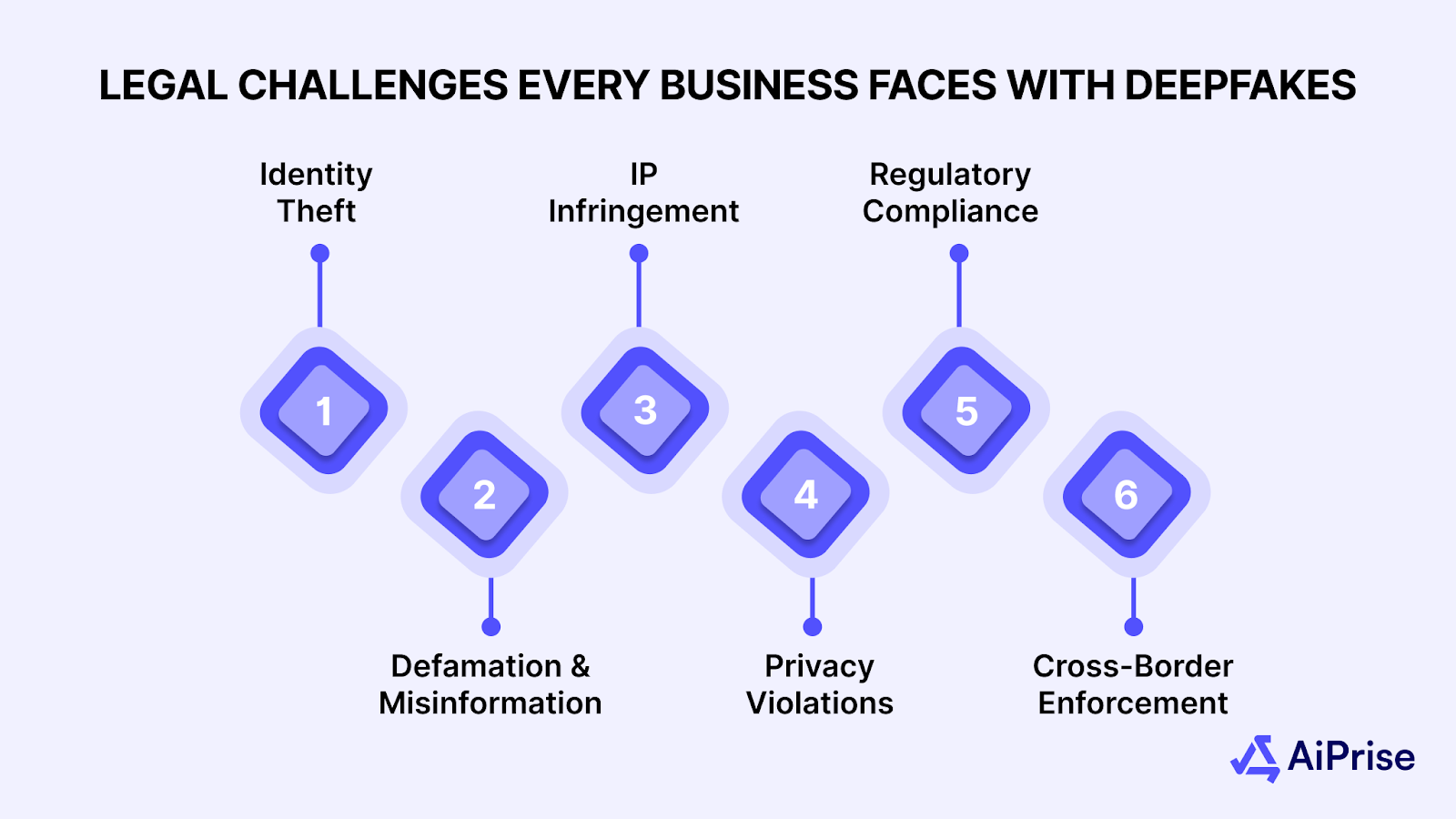
Deepfakes present multifaceted legal issues that can expose businesses to significant liabilities, regulatory scrutiny, and costly litigation.
The evolving nature of synthetic media complicates traditional legal frameworks, making it essential for businesses to understand the following key challenges:
Identity Theft and Impersonation
- Deepfakes can be used to impersonate CEOs or employees, enabling fraud such as unauthorized fund transfers or contract approvals.
- Legal recourse is complicated by jurisdictional boundaries and the anonymous nature of perpetrators.
Defamation and Misinformation
- Maliciously altered videos or audios can defame companies, manipulate public perception, or disrupt operations.
- Proving intentional harm and identifying the creator often pose hurdles in defamation lawsuits.
Intellectual Property (IP) Infringement
- Unauthorized use of corporate logos, trademarks, or copyrighted images within deepfakes raises IP violation concerns.
- Existing IP laws may not fully account for AI-generated content, requiring updated legal interpretations.
Privacy Violations and Consent
- Deepfake creation often involves using images or data without consent, breaking privacy laws such as GDPR and CCPA.
- Companies risk penalties if they fail to prevent the misuse of customer or employee likenesses.
Regulatory Compliance and Liability
- New laws like the EU AI Act and the U.S. TAKE IT DOWN Act mandate the swift removal of harmful deepfake content and impose compliance obligations.
- Non-compliance risks fines, reputational damage, and increased legal exposure.
Cross-Border Enforcement Challenges
- Deepfake content often originates in jurisdictions with lax or no regulations, limiting enforcement abilities.
- International cooperation is still nascent, leaving many incidents legally unresolved.
Also Read: Top Fraud Detection Companies and Tools: A 2025 Guide for Businesses
Understanding the legal challenges is crucial, but equally important is recognizing how governments worldwide are responding through legislation and regulation.
Current Deepfake Laws and Regulations
As deepfake technology matures, lawmakers across the globe are rushing to develop regulatory frameworks aimed at curbing malicious use and protecting individuals and businesses. However, the landscape remains fragmented and rapidly evolving.
Below is a detailed overview of key laws and regulatory efforts shaping the current deepfake legal environment:
United States
- The TAKE IT DOWN Act (2024): Requires platforms to remove harmful deepfake content within 48 hours of notification to combat misinformation and fraud.
- The DEEPFAKE Accountability Act: Proposes mandatory labeling of AI-generated deepfake videos to ensure transparency.
- State-level laws (e.g., California, Texas) criminalize malicious use of deepfake content, particularly in election interference and non-consensual pornography.
European Union
- EU Artificial Intelligence Act (AI Act): Classifies deepfake generation as a high-risk AI application, imposing strict transparency and accountability requirements on developers and distributors.
- Digital Services Act (DSA): Holds online platforms liable for illegal content, including deepfakes, with obligations for swift removal and proactive content moderation.
- GDPR enforcement penalizes unauthorized use of personal data for deepfake creation, emphasizing consent and privacy.
United Kingdom
- Online Safety Bill (2025): Extends platform responsibility for harmful deepfakes, with a focus on protecting individuals from defamation and privacy breaches.
- Criminal provisions address deepfake-based harassment and identity fraud.
Asia-Pacific
- China: Implements AI content labeling laws requiring clear disclosure when content is synthetically generated. Strong penalties for deepfake misuse in fraud and misinformation.
- India: Draft laws consider deepfake regulation within broader digital media and cybersecurity frameworks, but lack specific standalone statutes as of mid-2025.
Despite growing legal frameworks, enforcing deepfake laws remains a daunting challenge, but there are proactive steps your business can take to deal with this complex terrain.
Why Enforcing Deepfake Laws Is So Hard — And What You Can Do About It
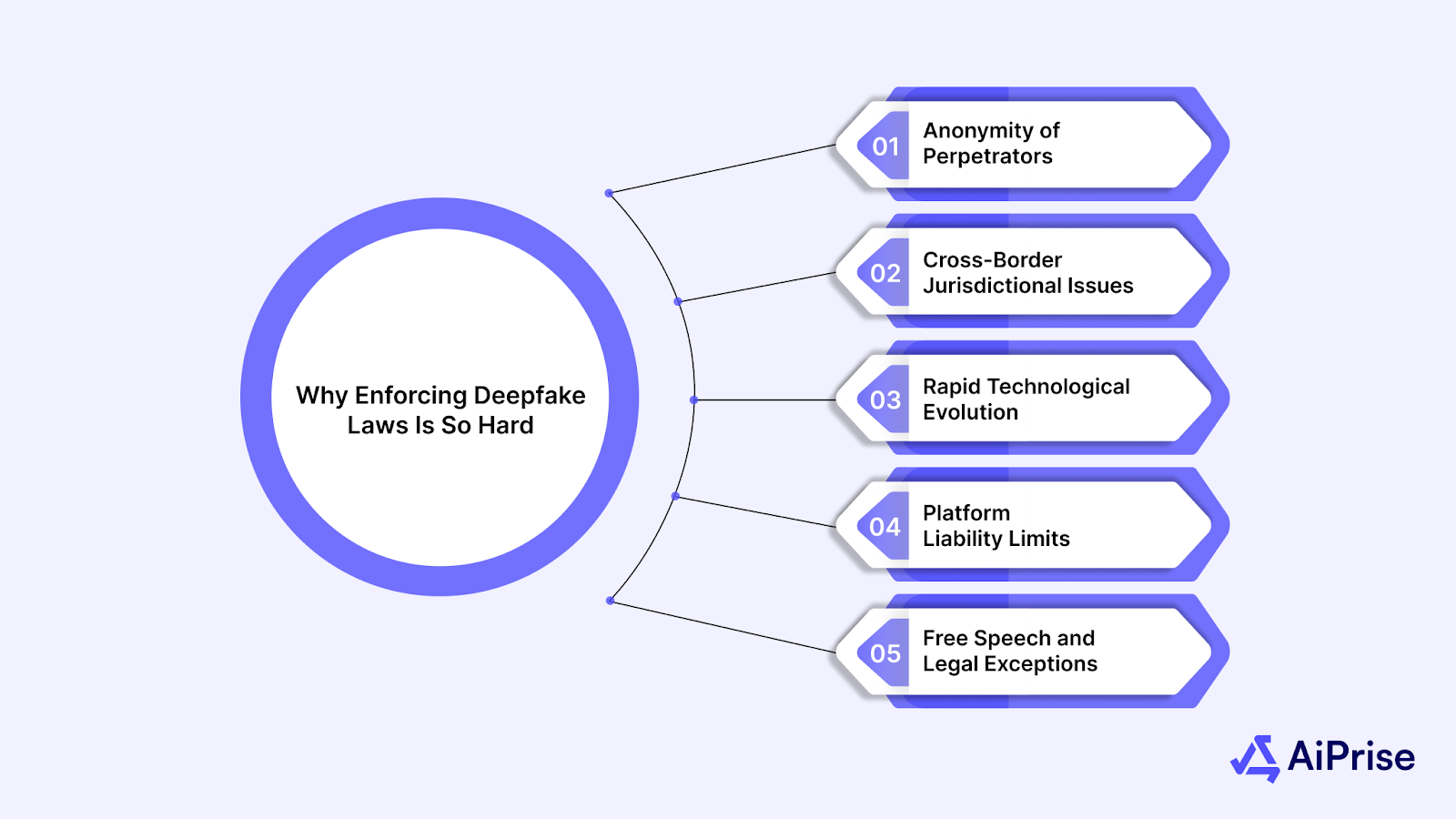
Enforcing deepfake regulations is notoriously difficult due to technological, legal, and jurisdictional hurdles. Understanding these barriers helps businesses adapt strategies to mitigate risks and support enforcement efforts.
Here are some of the key enforcement challenges:
- Anonymity of Perpetrators: Deepfake creators often operate anonymously or use encrypted channels, making identification and prosecution difficult. Invest in advanced AI-powered detection tools to identify fake content early and flag suspicious behavior for further investigation.
- Cross-Border Jurisdictional Issues: Deepfake content frequently originates in countries with limited or no regulations, complicating international legal cooperation and enforcement. Collaborate with global platforms and industry groups to facilitate rapid takedown and share intelligence internationally.
- Rapid Technological Evolution: AI and deepfake techniques evolve faster than legislation, rendering static laws outdated and ineffective over time. Develop adaptive internal policies, provide regular employee training, and consult legal experts to keep up with regulatory changes.
- Platform Liability Limits: Online platforms vary in willingness and capacity to enforce takedown rules, and uniform global standards are lacking. Establish direct communication with major platforms to expedite content removal and coordinate monitoring efforts.
- Free Speech and Legal Exceptions: Balancing protection against harmful deepfakes with free expression rights creates legal grey areas, affecting enforcement clarity. Craft clear internal guidelines balancing brand protection with ethical content management and uphold responsible moderation standards.
After grasping the enforcement complexities, the next step is empowering your organization to proactively defend against deepfake legal threats and safeguard your assets before an attack hits.
How Your Business Can Stay Ahead of Deepfake Legal Threats
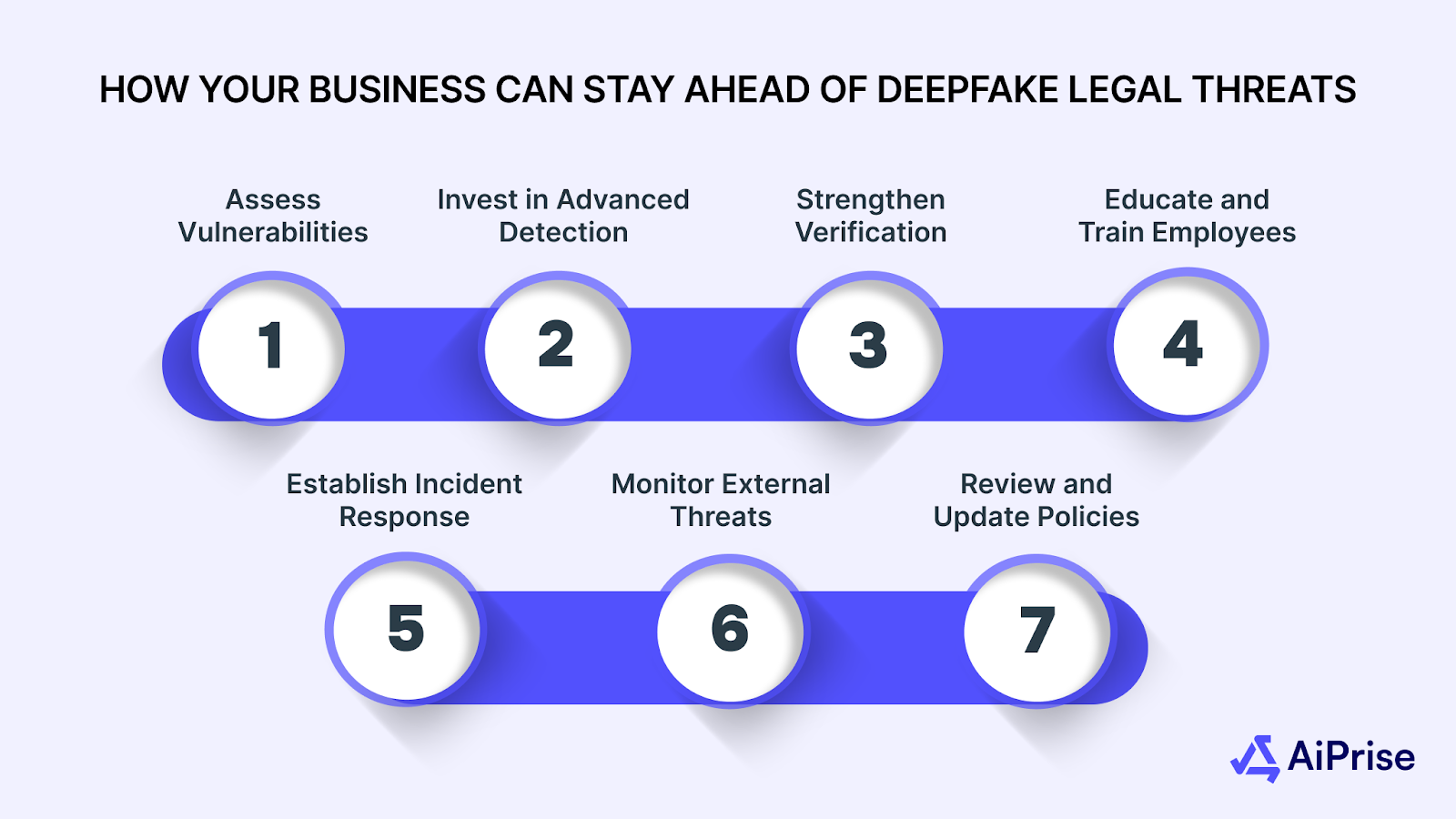
Staying resilient against deepfake risks requires a multi-layered strategy that blends technology, policy, training, and ongoing vigilance. Companies that integrate these best practices are not only less likely to fall victim to deepfake fraud but are better positioned for regulatory compliance and brand protection.
Here are some practical steps to mitigate deepfake threats:
- Assess Vulnerabilities Regularly: Evaluate how susceptible your processes are (especially those involving media, voice, or video verification). Apply ongoing audits to identify and patch weaknesses in high-risk areas such as payment authorization or HR onboarding.
- Invest in Advanced Detection Technology: Deploy AI-powered tools that can detect manipulated audio, video, or images in real time. Solutions like liveness detection and video authentication systems help spot signs of synthetic media before financial or reputation damage occurs.
- Strengthen Verification and Access Controls: Insist on multi-factor verification for sensitive operations. For fund transfers, use call-back protocols or verified messaging channels. Pair biometrics with secure digital signatures to shut out impersonators.
- Educate and Train Employees: Implement regular security awareness programs covering deepfake risks and real-world attack simulations. Train staff to recognize unusual behaviors in requests and communications, especially those involving executives or financial data.
- Establish Incident Response and Crisis Plans: Prepare a plan with clear roles, rapid communication procedures, and escalation paths. If a deepfake incident occurs, respond quickly, inform stakeholders, and coordinate with legal and cyber defense experts.
- Monitor External Threats and Collaborate: Continuously monitor for deepfake activity across social media, supplier channels, and the dark web. Partner with industry groups and security service providers to stay updated on new fraud tactics and best practices.
- Review and Update Policies for Legal Compliance: Ensure your data usage, media, and AI policies align with the latest laws and standards, EU AI Act, U.S. federal/state regulations, and region-specific rules. Conduct regular policy reviews and compliance checks.
Once you've established a strong defense, the real advantage comes from using smart technology partners, especially those built to tackle emerging fraud and regulatory threats at scale.
How AiPrise Empowers You to Deal with Deepfake Legal Risks
AiPrise specializes in advanced, AI-driven business verification and fraud intelligence, giving your business the tools to stay protected, compliant, and ready for anything deepfake attackers throw your way.
Here are the key ways AiPrise makes a difference:
- Real-time AI detection flags fake identities, deepfakes, and fraud instantly.
- Compliance tools automate KYC, AML, and reporting for global standards.
- Biometric and liveness detection block impersonators at onboarding or transaction.
- Case management tracks, audits, and resolves fraud investigations fast.
- Continuous re-verification and watchlist screening protect your brand.
- Plug-and-play integration fits any team, workflow, or platform as you grow.
Ready to take control of deepfake risks? See AiPrise’s advanced protection in action, Book A Demo today and discover how your business can stay one step ahead of evolving threats.
Summing Up,
Staying ahead of deepfake risks demands constant vigilance, rapid adaptation, and expert technology. As legal challenges and attacker tactics evolve, businesses must rely on proven fraud detection, smart compliance, and strong identity verification solutions.
AiPrise delivers all of this, helping you safeguard finances, compliance, and reputation before you become a target. Use AiPrise’s advanced AI-driven fraud detection, biometric verification, and compliance automation.
Visit the website today and see how AiPrise keeps your business secure from deepfake threats.
FAQs
1. What are the main technical challenges in detecting deepfakes?
Detecting deepfakes is difficult due to evolving AI algorithms, variations in video quality, and the absence of universal detection standards. False positives and lack of explainability also limit current tools' effectiveness.
2. Can businesses legally take action against deepfake creators in other countries?
Cross-border enforcement is complex due to jurisdictional differences and inconsistent laws. Cooperation between international authorities is improving but remains limited, making proactive risk management essential.
3. How does biometric liveness detection improve deepfake prevention?
Liveness detection verifies that a person is physically present by analyzing subtle physiological cues, making it harder for deepfake-generated images or videos to bypass identity verification.
4. Are there industry standards for labeling or disclosing AI-generated content?
No universal standard exists yet, but several governments and organizations advocate mandatory disclosure labels for synthetic media to promote transparency and reduce misuse.
5. How can continuous learning models enhance deepfake detection?
Continuous learning allows detection systems to adapt to emerging deepfake techniques over time by updating models with new data, thereby maintaining accuracy against evolving threats.
You might want to read these...

Aiprise has helped streamline our KYB (Know Your Business) flow in 100+ countries. No other tool comes close.





Speed Up Your Compliance by 10x
Automate your compliance processes with AiPrise and focus on growing your business.


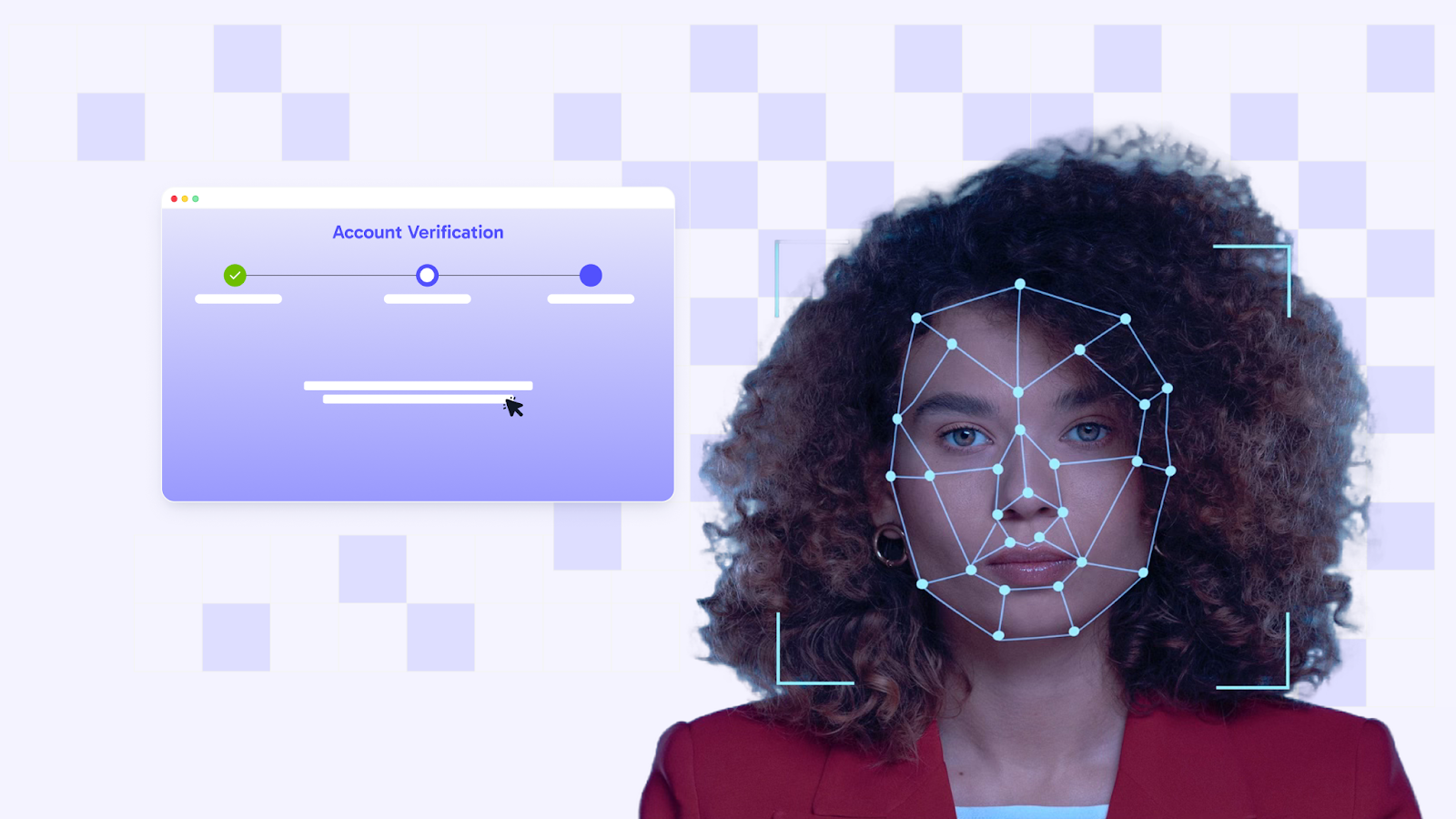

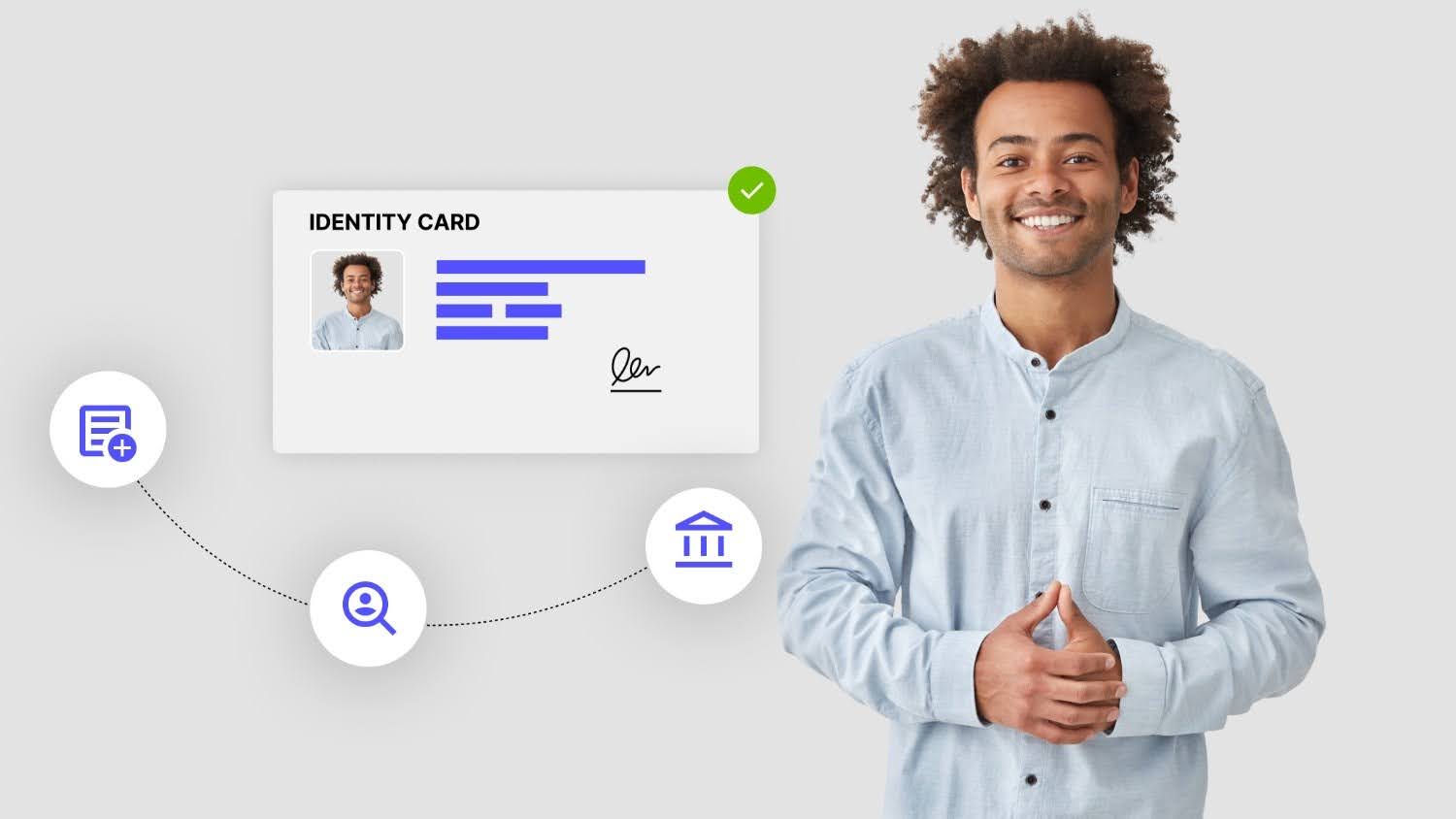

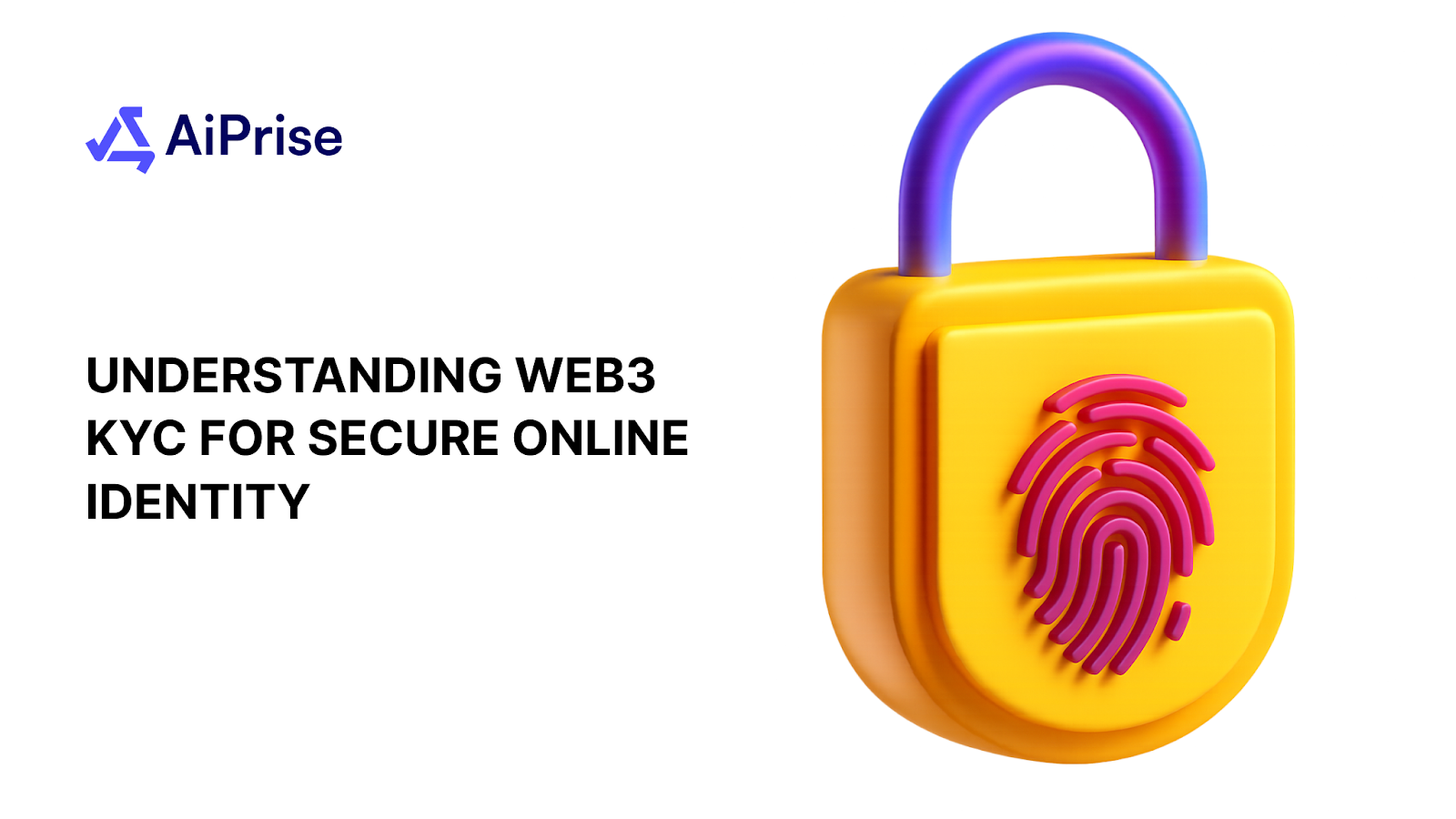
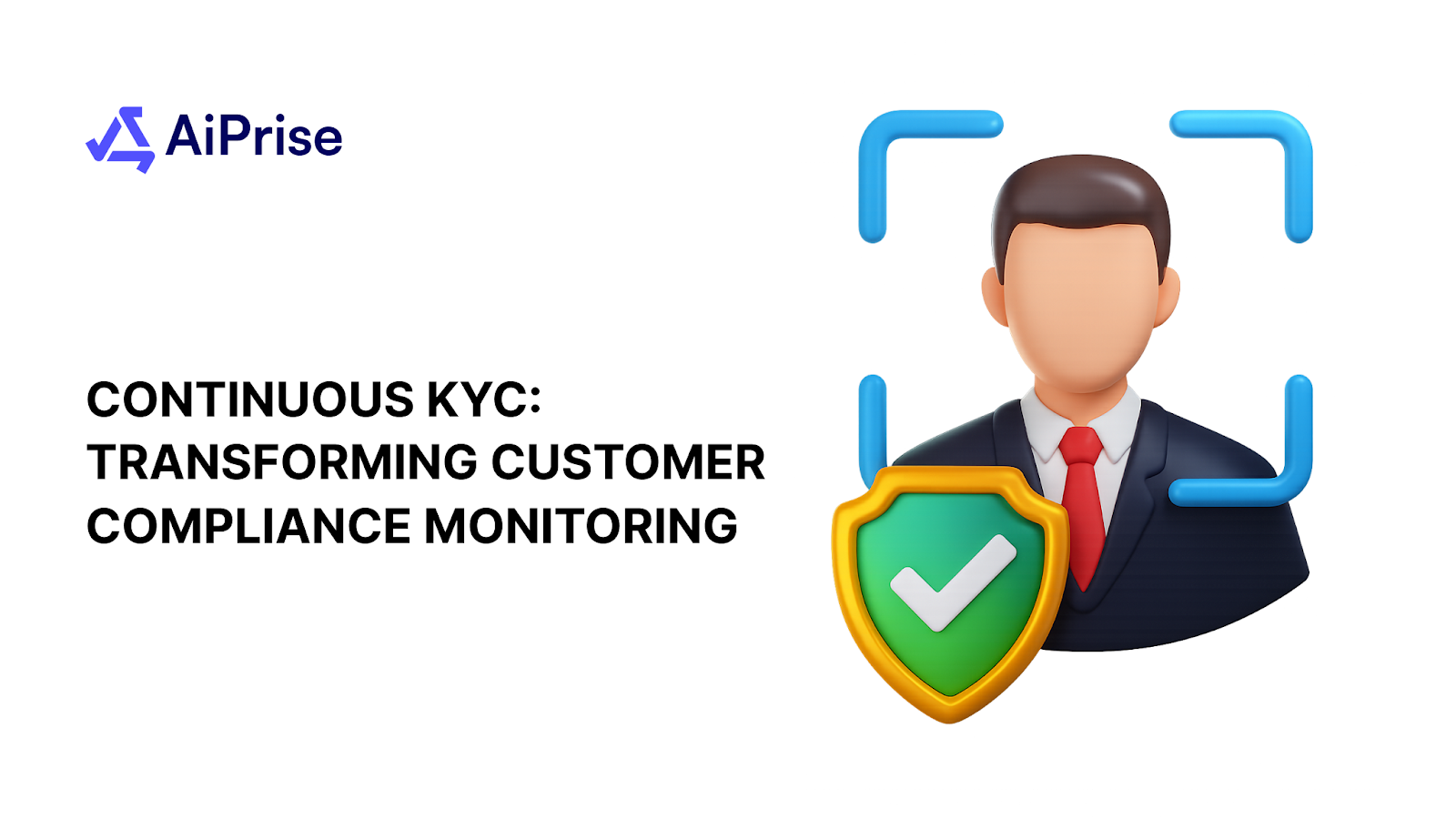
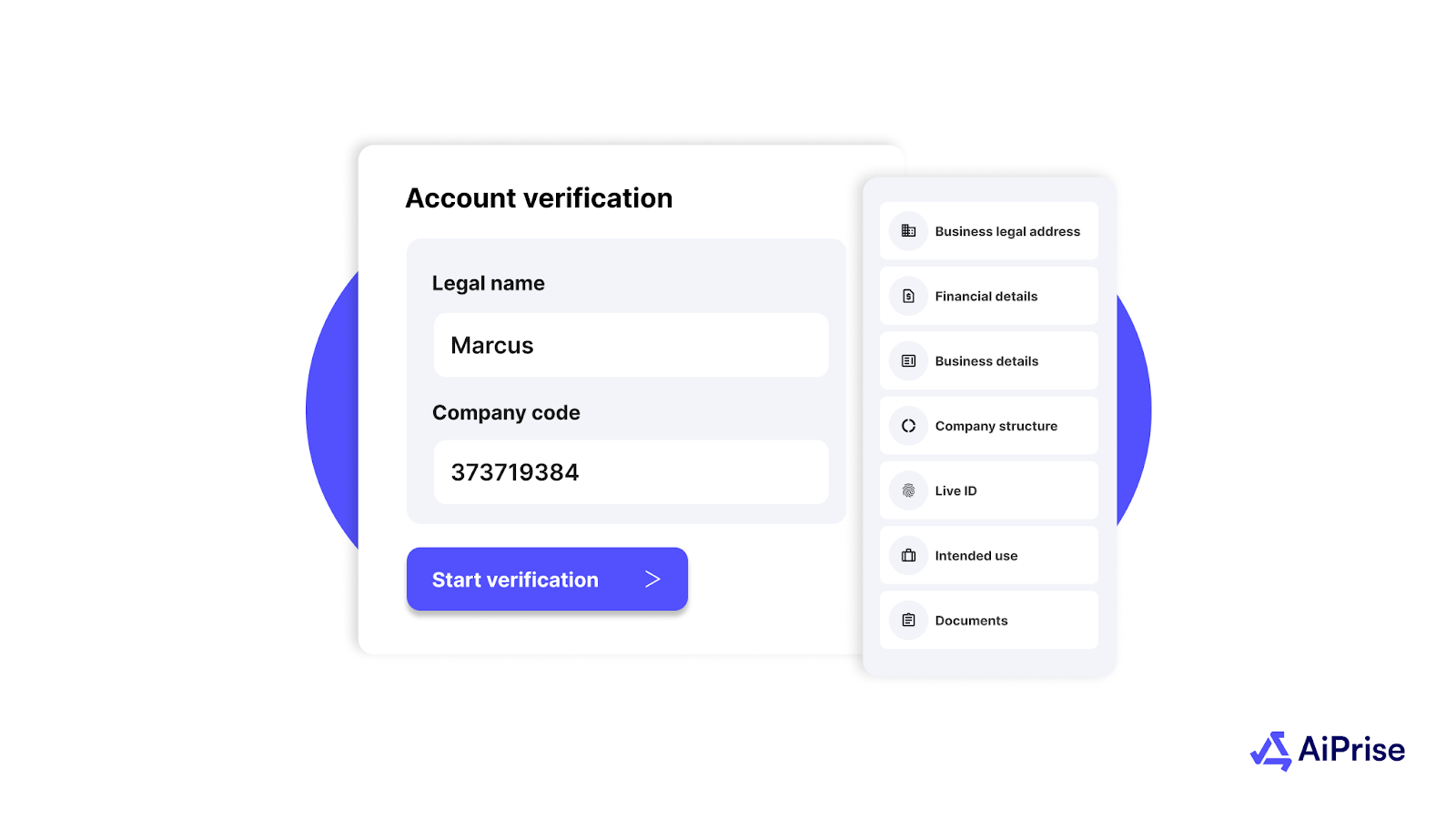
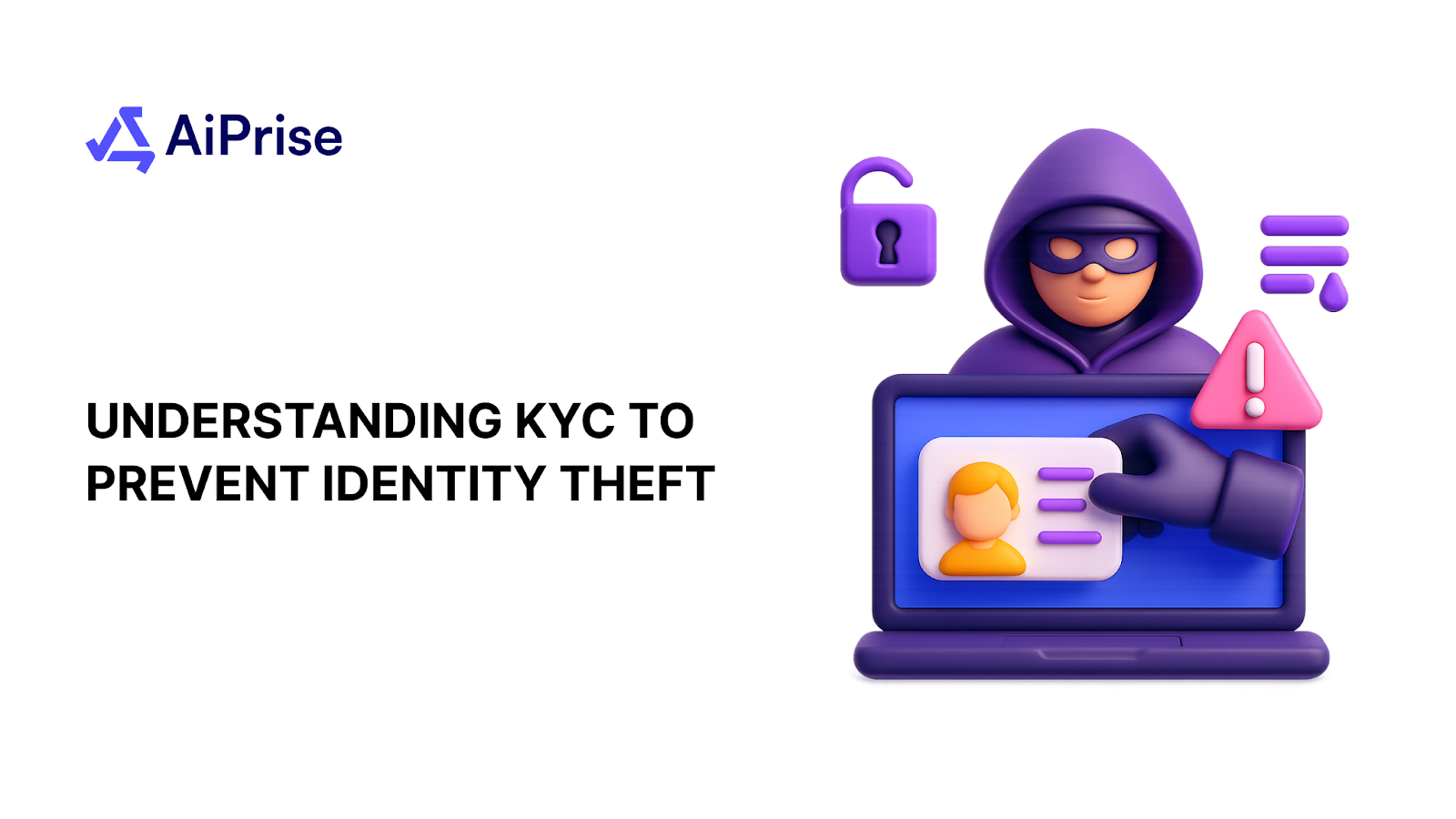


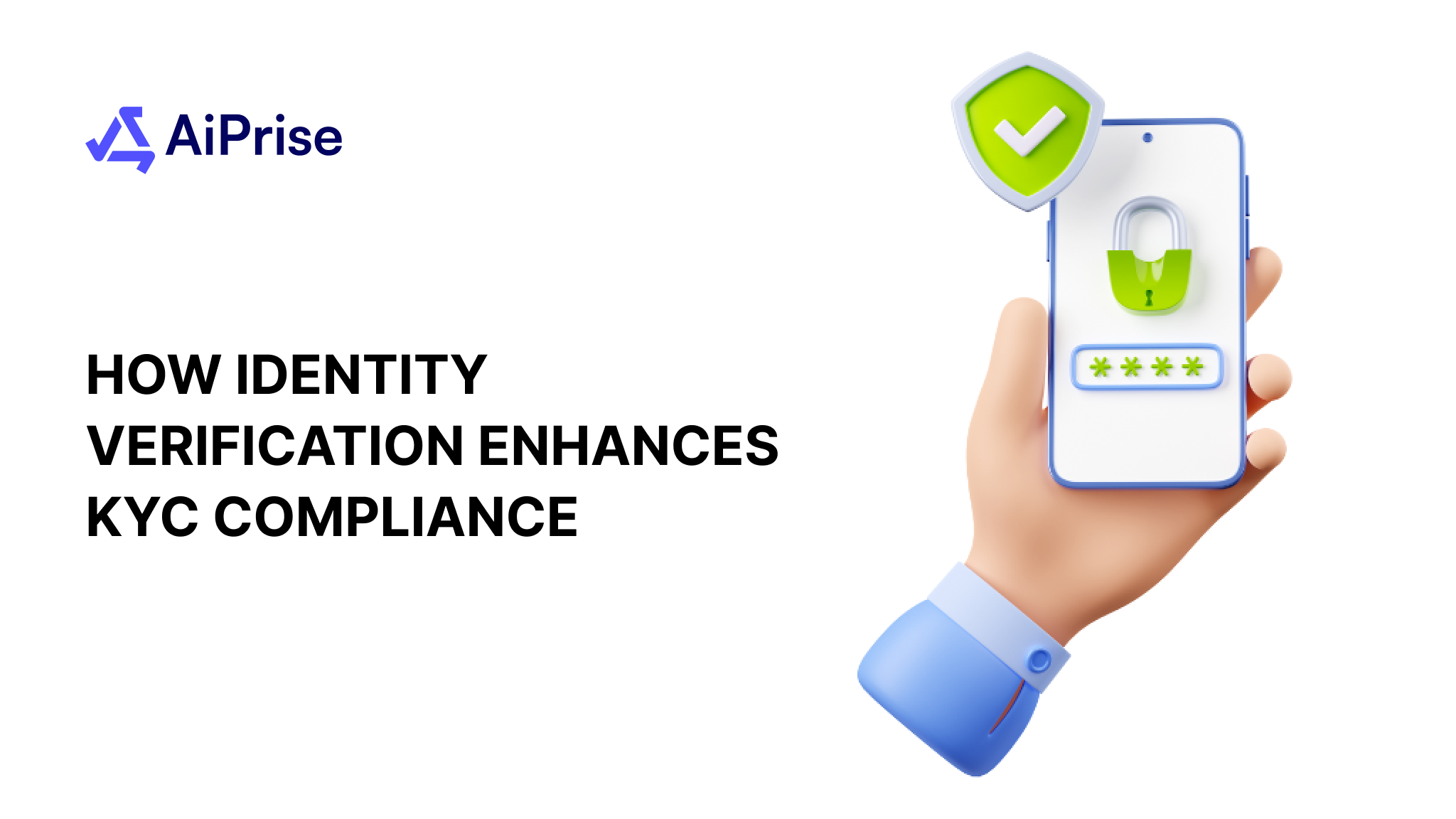

.png)

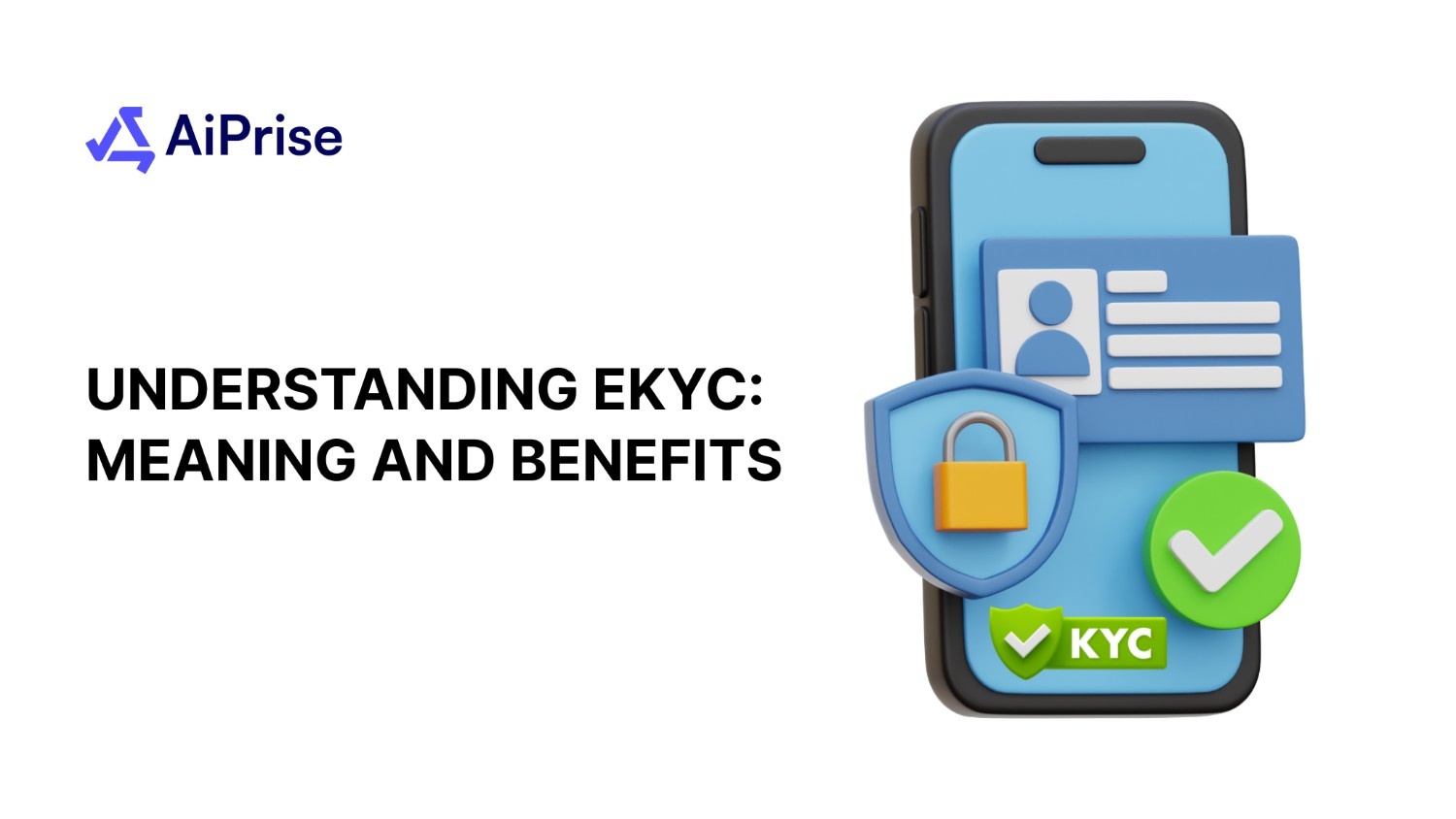

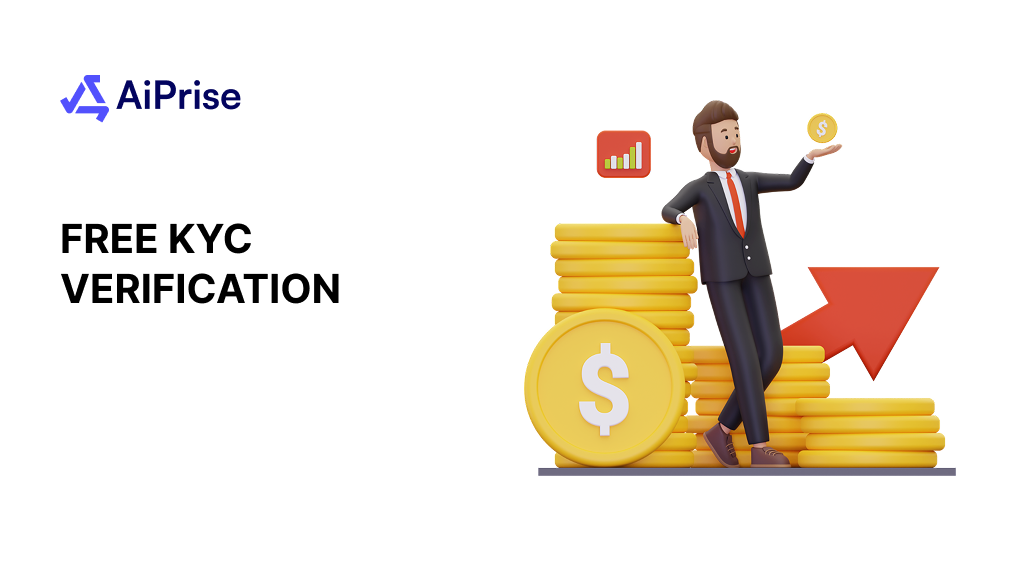
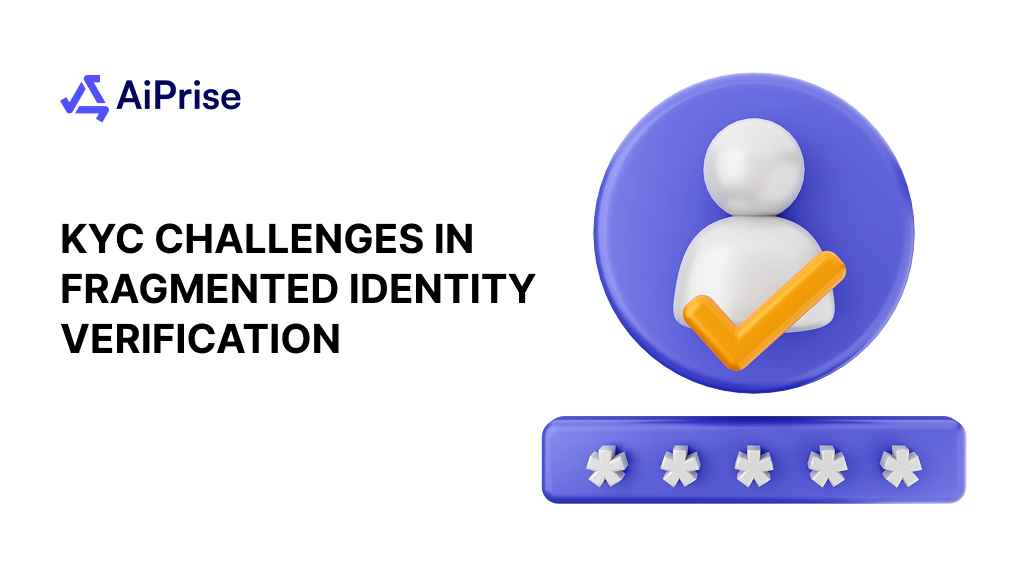
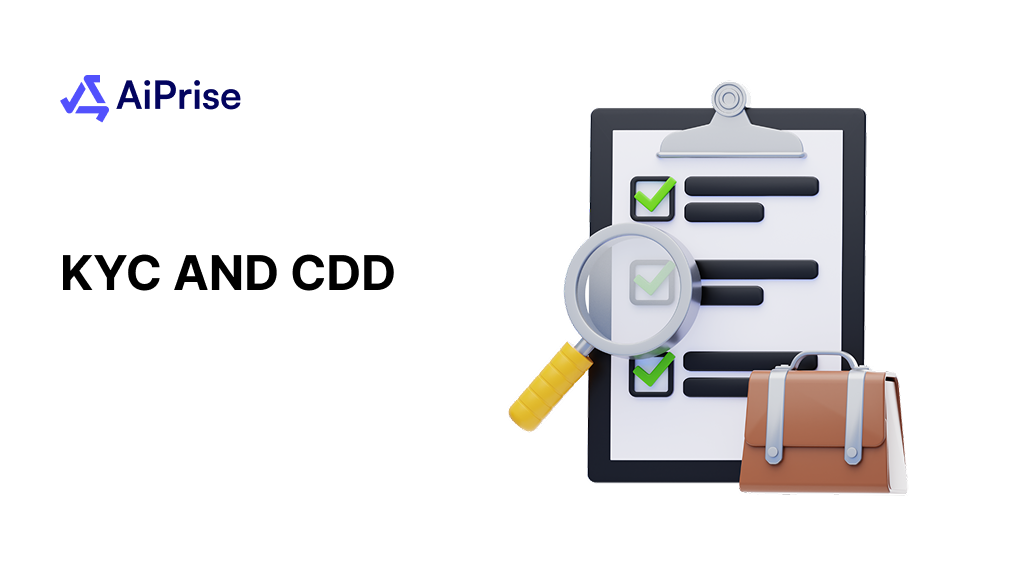








.png)






















